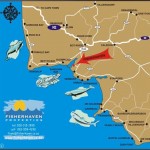Kleinmond Vlei Horses and Horses of the Anglo Boer War
- Jul
- 08
The future of the horses depends on many factors. For the past 40-odd years the small group had no enemies and, fortunately for themselves and the owners of the vlei, their numbers remained small. They exerted no pressure on the environment to which they are ideally adapted. This happy situation may very well last for another 40 years if the numbers, in my estimation, do not go beyond thirty-odd animals.
The horses are not wild in the true sense of the word. Although the present group and their ancestors for the past 40 years never had a halter over their heads and will react like any, in this case big and strong, wild animal when cornered or captured, they have recently become quite used to our presence when we visit them in the vlei and also I believe to the presence of riders from Botriver and Arabella who on occasion approach them on horseback.
They have become well-known and their existence has given rise to a number of fanciful theories and romantic tales about their origins. One of these is that they are descended from horses hidden from the British when horses were commandeered for the army in the Anglo Boer War (1899 – 1902). According to another story they swam ashore when the troopship Birkenhead sank near the coast. I believe that I have the true, but rather prosaic, story about their beginnings from the late mr Jack Delport who was the son of the Caledon farmer who owned the entire stretch of land from the present farm Ysterklip( now the Arabella golf estate) to Kleinmond.
The distant forebears of our “wild horses” were farm horses, used for ploughing and hoeing and pulling wagons and carts and even riding before most of these activities became fully mechanised in the years following World War II. But, however prosaic their descent may be, for me and other students of horse breeds and types they are very special. They may be the very last representatives of what Schreuder (1915) called the Bolandse Waperd, a distinct and, in its hey days very useful offshoot of the famous Cape Horse of the 18th and 19th centuries which have, since the devastation of the Anglo Boer War been obliterated through injudicious crossbreeding. The exterior conformation of the vlei horses shows this relationship quite clearly and the more inbred they became the more obvious and fixed their resemblance to their true forebears showed up in the body conformation.
In the publication Horses of the Anglo Boer War, I pointed out that when, in October 1899, the burghers of the republics of Transvaal and Orange Free State went to war against the mighty Imperial war machine, they joined their commandos on their homebred South African horses. All of these were descendants of the famous Cape Horse of the 18th and 19th centuries. Their forebears carried first the hunters and explorers and later the Voortrekkers to the north. Some of them found a foothold in the mountain kingdom of Lesotho where the even more well-known Basuto Pony developed as a local strain, very well adapted to rocky, mountainous terrain and of a wonderful disposition and powers of endurance.
Recent Posts
- The Pros And Cons Of Solar Power
- 3 Things Private Sellers Wish they Knew (That Estate Agents Do!)
- Top 5 Tips For Sellers in a Buyers’ Market
- Top 5 Tips For Buyers In A Buyers’ Market
- Your Property Title Deed – A Short History
Contact Us
Fisherhaven Properties
Frans Theunissen
Tel: 082 559 4290
Tel: 028 315 1990
Fax: 086 660 4823
info@fisherhaven.co.za

Please ask us about long-term property rentals in the area.


